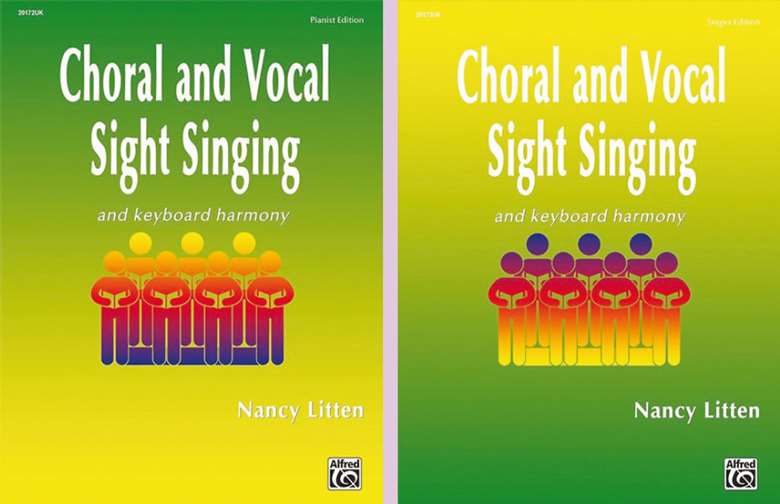Book Review: Choral and Vocal Sight Singing and Keyboard Harmony
Clare Stevens
Wednesday, July 1, 2020
Clare Stevens reviews the pianists and singer editions of Choral and Vocal Sight Singing and Keyboard Harmony by Nancy Litten, published by Alfred Music UK Ltd.

Nancy Litten's name will be familiar to readers of Music Teacher: in this incredibly useful resource she draws together her many years of varied experience – as an accompanist to choirs, a choral conductor, and a teacher of piano and electronic keyboard – to suggest ways in which individuals and groups can develop some of the skills amateur (and even some professional) musicians and teachers are often lacking.
The book is presented as a simple sequence of short sight-reading exercises, divided into seven stages of progressive difficulty. Most are original melodies and (optional) words, but a few familiar songs are included to illustrate particular concepts: Ode to Joy for stepwise movement, Jerusalem for an unusual time signature, Schubert's An die musik to demonstrate major and minor sixths. These pieces can function as warm-up exercises and are designed to be practised, not just sight-read.
Litten's intention is that the book can be used by conductors of school or amateur choirs, by classroom music teachers with their groups, or by solo singers of any age and their teachers. It could also be used by an adult amateur working on their own to improve their skills. Technical terms are introduced gradually, and the exercises are interspersed with occasional helpful, easy-to-understand tips. The reader is not overburdened with explanations. My only reservation about the singers’ edition is that it does not introduce novice tenors and basses to the concept of singing from the bass clef.
Particularly endearing is the wide appeal of the words, some of which are nursery rhyme-like in their subject matter, while others are much more up-to-date, dealing with lost glasses, contracts arriving by email, or the sound of pneumatic drills outside the house that will result in the installation of cable TV! Allotments, toolboxes, jet-skiing and ballet classes also feature.

Some piano accompaniments together with chord symbols for each piece are provided, but they are not considered to be essential; however, the pianist's book also serves as a tutor book for less experienced keyboard players, encouraging them to explore different realisations of the chords – there is a complete compendium at the back.
Litten states in her introduction that members of a choir pick up sight singing skills by osmosis, the stronger ones enabling the weaker ones. In my experience of choral singing that process can be very slow, even for singers who have already learned to read music through playing an instrument. The aim of this workbook is to prepare choir members for the type of challenges they are likely to encounter in choral repertoire; it would be particularly suitable for teaching the rudiments of sight-reading to a children's, youth or community choir, but would also be a very useful primer for more experienced singers. I certainly won't be giving away my review copy!

